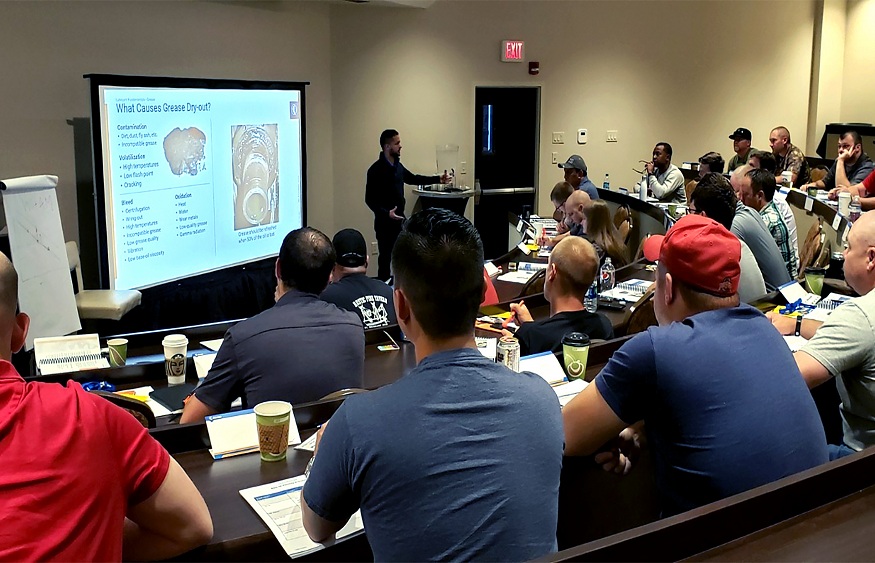Every company needs to invest in some kind of leadership development program; because it’s one of the best ways to make sure you get great leaders and great business results.
There’s no doubt that great leaders can affect people in many different ways. They are a powerful force that brings about good changes in culture and keeps teams moving forward. They also give people and teams inspiration and motivation.
But the question is whether or not people can learn the skills they need to be leaders. And do the people who are already in charge need more training? First, let’s talk about what it means to train leaders.
What is Leadership Training?
Leaders may need training in both soft and hard skills, depending on your organization’s current challenges.
For example, new and coming leaders may need to develop skills such as listening, conflict resolution and time management, so that they can step in their role.
How do you develop good leadership training?
Developing good leadership training in Singapore is crucial for any organization that wants to cultivate effective leaders.
Effective leaders are critical for motivating teams, driving innovation, and achieving success.
However, developing effective leadership training can be a challenging task. Below are some key steps that can help you create a leadership training program that produces strong, effective leaders.
1. Identify the key competencies and skills required for effective leadership
The first step in developing a successful leadership courses is to identify the key competencies and skills that effective leaders need.
These might include communication, decision-making, strategic planning, team building, problem-solving, and conflict resolution.
Identifying these skills and competencies will help you create a training program that is tailored to the needs of your organization.
2. Create a comprehensive curriculum
Once you have identified the key competencies and skills required for effective leadership, the next step is to create a comprehensive curriculum that covers these areas.
This may involve creating a series of modules or courses that cover topics such as communication, decision-making, and team building.
It is important to ensure that the curriculum is well-structured and easy to follow, with clear objectives and outcomes.
3. Use a variety of training methods
Effective leadership training should incorporate a variety of training methods to cater to different learning styles.
These might include classroom lectures, workshops, role-playing exercises, case studies, and e-learning modules.
By using a variety of training methods, you can ensure that your training program is engaging and effective for all participants.
4. Provide opportunities for practice and feedback
Providing opportunities for practice and feedback is critical to developing effective leaders.
This might involve giving participants the opportunity to practice their leadership skills in real-life scenarios or providing them with feedback from trainers or peers.
By providing opportunities for practice and feedback, you can help participants develop their skills and become more confident leaders.
5. Ensure that training is ongoing
Effective leadership training is not a one-time event but an ongoing process. It is important to ensure that training is ongoing and that participants have access to additional resources and support as they develop their skills.
This might involve providing ongoing coaching, mentoring, or access to additional training resources.
6. Tailor training to different leadership levels
Leadership training should be tailored to the different levels of leadership within your organization.
For example, training for new managers may focus on foundational skills such as communication and time management, while training for more senior leaders may focus on strategic planning and change management.
Tailoring training to the specific needs of each level of leadership will ensure that participants receive the appropriate training and are better prepared to meet the unique challenges of their roles.
7. Incorporate real-world scenarios and case studies
Incorporating real-world scenarios and case studies into leadership training can help participants better understand how to apply leadership skills and competencies in practice.
Real-world scenarios and case studies provide participants with opportunities to analyze and solve complex problems, make difficult decisions, and develop their critical thinking skills.
This type of experiential learning can be highly effective in developing strong, effective leaders.
8. Encourage collaboration and networking
Leadership training should encourage collaboration and networking among participants.
Providing opportunities for participants to work together on projects, share experiences, and provide feedback to each other can help build a sense of community and support.
This can also help participants develop valuable networking connections that can benefit them and their organizations in the future.
9. Evaluate training effectiveness
Effective leadership training should be evaluated regularly to determine its effectiveness. This may involve gathering feedback from participants, monitoring key performance indicators, and measuring the impact of training on the organization.
Evaluating training effectiveness can help identify areas for improvement and ensure that training remains relevant and effective over time.
10. Continuously update and improve training
Leadership training should be continuously updated and improved to ensure that it remains relevant and effective.
This may involve incorporating new training methods or technologies, updating the curriculum to reflect changes in the industry or organizational needs, or adjusting the training to meet the evolving needs of participants.
Continuously updating and improving training can help ensure that participants receive the most up-to-date and effective training possible.
11. Align training with organizational goals and values
Leadership training courses should be aligned with the goals and values of the organization. This ensures that leaders are trained in the skills and competencies that are most relevant to achieving the organization’s mission and vision.
It also helps to ensure that leaders are aligned with the organization’s culture and values, which can help promote a more positive work environment.
12. Offer leadership development opportunities to all employees
Leadership development opportunities should be offered to all employees, not just those in formal leadership roles.
Providing opportunities for all employees to develop their leadership skills can help create a more engaged and motivated workforce.
It can also help identify future leaders within the organization and provide a pipeline for succession planning.
13. Foster a culture of learning and development
Fostering a culture of learning and development is critical to developing effective leaders. This involves creating an environment where employees are encouraged to learn and grow, and where continuous improvement is valued.
A culture of learning and development can help attract and retain top talent, and can contribute to a more innovative and adaptable organization.
14. Measure the ROI of leadership training
Measuring the return on investment (ROI) of leadership training is important to justify the cost of training and to demonstrate its value to the organization.
ROI can be measured in various ways, such as by tracking improvements in key performance indicators, such as employee engagement, retention, and productivity.
It can also be measured by tracking the impact of training on the bottom line, such as through increased revenue or cost savings.
15. Partner with external experts
Partnering with external experts can bring valuable insights and perspectives to leadership training.
External experts can provide specialized knowledge and experience that may not be available internally, and can help ensure that training is aligned with industry best practices.
They can also help provide a fresh perspective and can bring new ideas and approaches to leadership training.
Final words
Developing effective leadership training requires a structured approach that involves identifying key competencies, creating a comprehensive curriculum, using a variety of training methods, providing opportunities for practice and feedback, and ensuring that training is ongoing.
By following these key steps, you can create a leadership course in Singapore that produces strong, effective leaders who are well-equipped to lead your organization to success.



